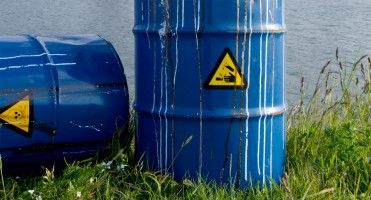
A new survey of close to 8,000 zip codes nationwide found that nearly one-third all of all homes are located in housing areas with a high or exceedingly high risk for hazardous material. Specifically, the company found that the presence of poor air quality, superfund sites, pollution, brownfields, and former drug labs at these sites. Perhaps unsurprisingly, housing prices were also lower in these areas—in fact, 15 percent lower than in areas with low risk and close to 2 percent lower than they were even 10 years ago.
Housing Areas in High Risk Areas
These are the markets in which approximately 95 percent of the zip codes are in high and exceedingly high risk areas:
- Dayton, OH
- Chicago-Naperville-Elgin, IL-IN-WI
- San Diego-Carlsbad, CA
- Indianapolis-Carmel-Anderson, IN
- Detroit-Warren-Dearborn, MI
- Canton-Massillon, OH
- Bakersfield, CA
- Grand Rapids-Wyoming, MI
- Kansas City, MO-KS
- Los Angeles-Long Beach-Anaheim, CA
- El Paso, TX
- Toledo, OH
- Reading, PA
- Louisville-Jefferson County, KY-IN
- Stockton-Lodi, CA
- Cleveland-Elyria, OH
- Akron, OH
- Riverside-San Bernardino-Ontario, CA
Federal Superfund Law
The Comprehensive Environmental Response, Compensation, and Liability Act (“CERCLA” or Superfund) was designed to try and ensure that hazardous waste sites were cleaned up by setting up a fund to clean up abandoned hazardous waste sites and spills, accidents, and other releases of pollutants and contaminants. Through the law, the Environmental Protection Agency (EPA) is empowered to work with the polluting parties in ensuring that any given site is cleaned up and those parties cooperate during the process. When those parties responsible fail to act, EPA itself cleans up the site.
However, parties located near these sites wishing to hold the polluting company responsible for contaminants must be aware of state time limits, known as “statutes of repose,” even if it takes some time to realize that a given site is contaminated. Residents of these housing areas must be diligent in addressing any potential toxic wastes located near them, particularly when it comes to pollutants in the water supply that can cause cancer. Those states with time limits on suing the polluting company for compensation include Kansas, Oregon, Connecticut, and North Carolina, but not Louisiana.
These environmental concerns are particularly prevalent right now, as the country faces severe storms. Storms can cause extensive damage to previous Superfund sites and spread hundreds of tons of contaminated debris.
Environmental Hazard Attorneys
Simply because it is easier and sometimes cheaper to pollute and violate environmental laws, companies and others should not be able to discharge toxic waste into neighborhoods and threaten the public’s health. We at Harrell & Nowak have spent years litigating against these bad actors and those responsible for hazardous contamination. Contact us today for a free consultation if you are concerned about your home and/or family being located to a hazardous site.
